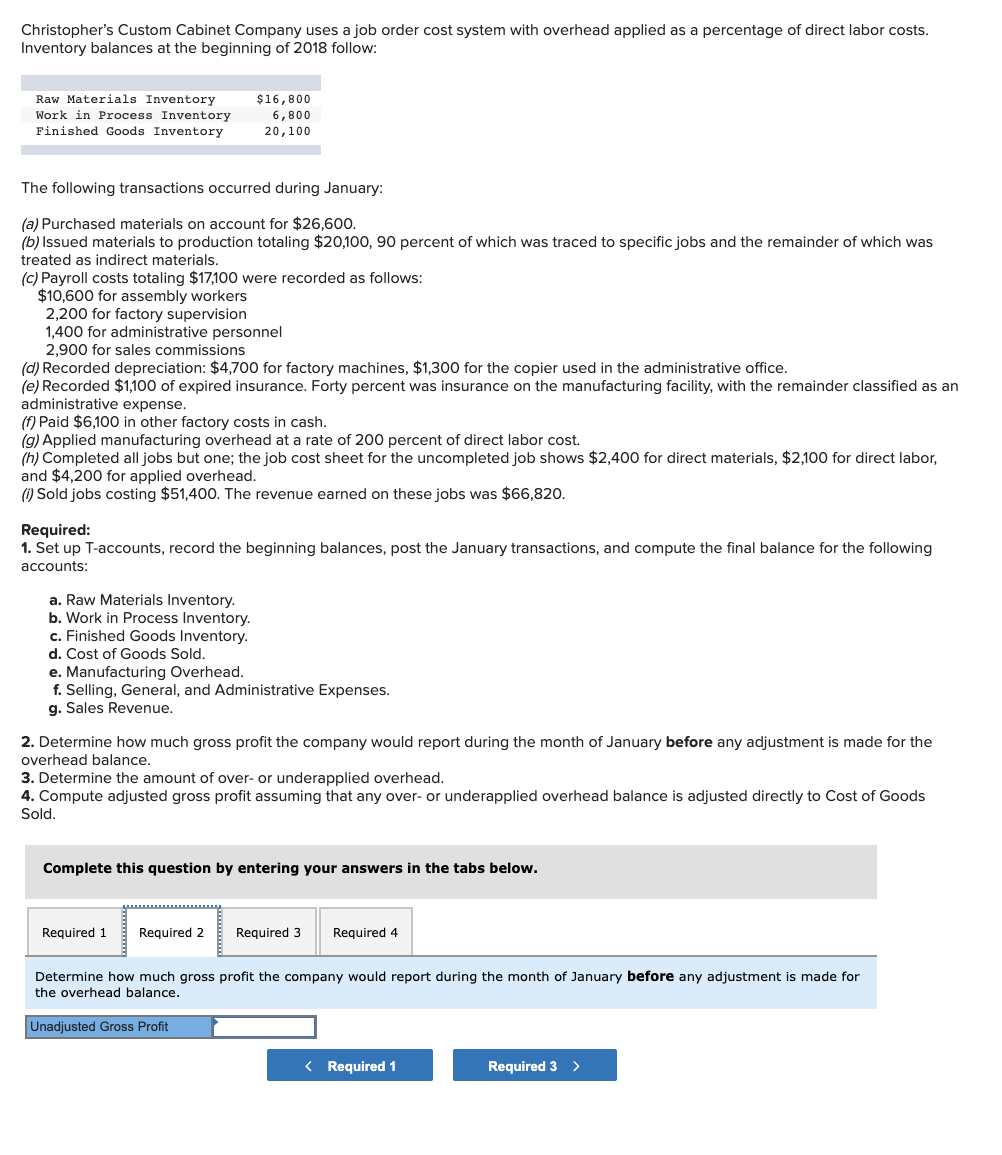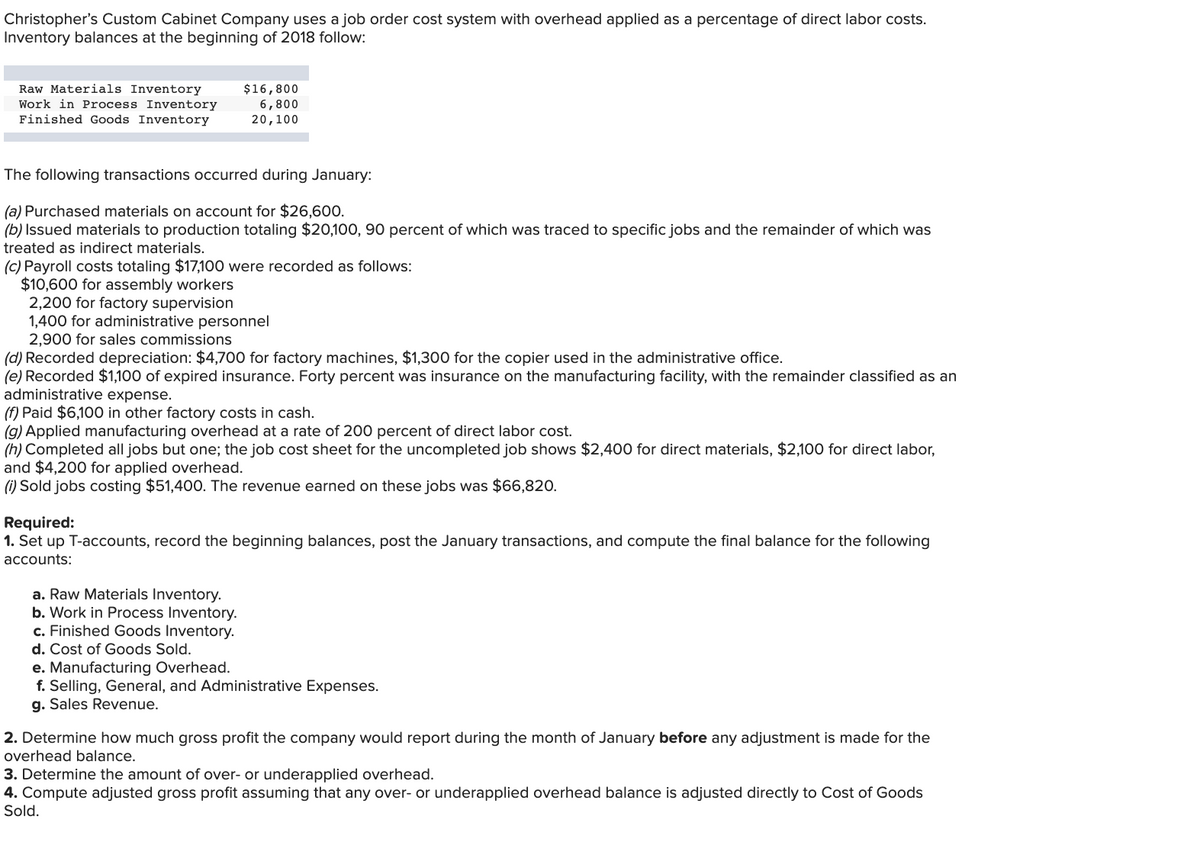Christopher's Custom Cabinet Company uses a job order cost system with overhead applied as a percentage of direct labor costs. Inventory balances at the beginning of 2018 follow: Raw Materials Inventory Work in Process Inventory Finished Goods Inventory $16,800 6,800 20,100 The following transactions occurred during January: (a) Purchased materials on account for $26,600. (b) Issued materials to production totaling $20,100, 90 percent of which was traced to specific jobs and the remainder of which was treated as indirect materials. (c) Payroll costs totaling $17,100 were recorded as follows: $10,600 for assembly workers 2,200 for factory supervision 1,400 for administrative personnel 2,900 for sales commissions (d) Recorded depreciation: $4,700 for factory machines, $1,300 for the copier used in the administrative office. (e) Recorded $1,100 of expired insurance. Forty percent was insurance on the manufacturing facility, with the remainder classified as an administrative expense. (f) Paid $6,100 in other factory costs in cash. (g) Applied manufacturing overhead at a rate of 200 percent of direct labor cost. (h) Completed all jobs but one; the job cost sheet for the uncompleted job shows $2,400 for direct materials, $2,100 for direct labor, and $4,200 for applied overhead. (1) Sold jobs costing $51,400. The revenue earned on these jobs was $66,820. Required: 1. Set up T-accounts, record the beginning balances, post the January transactions, and compute the final balance for the following accounts: a. Raw Materials Inventory. b. Work in Process Inventory. c. Finished Goods Inventory. d. Cost of Goods Sold. e. Manufacturing Overhead. f. Selling, General, and Administrative Expenses. g. Sales Revenue. 2. Determine how much gross profit the company would report during the month of January before any adjustment is made for the overhead balance. 3. Determine the amount of over- or underapplied overhead.
Process Costing
Process costing is a sort of operation costing which is employed to determine the value of a product at each process or stage of producing process, applicable where goods produced from a series of continuous operations or procedure.
Job Costing
Job costing is adhesive costs of each and every job involved in the production processes. It is an accounting measure. It is a method which determines the cost of specific jobs, which are performed according to the consumer’s specifications. Job costing is possible only in businesses where the production is done as per the customer’s requirement. For example, some customers order to manufacture furniture as per their needs.
ABC Costing
Cost Accounting is a form of managerial accounting that helps the company in assessing the total variable cost so as to compute the cost of production. Cost accounting is generally used by the management so as to ensure better decision-making. In comparison to financial accounting, cost accounting has to follow a set standard ad can be used flexibly by the management as per their needs. The types of Cost Accounting include – Lean Accounting, Standard Costing, Marginal Costing and Activity Based Costing.


Trending now
This is a popular solution!
Step by step
Solved in 2 steps









